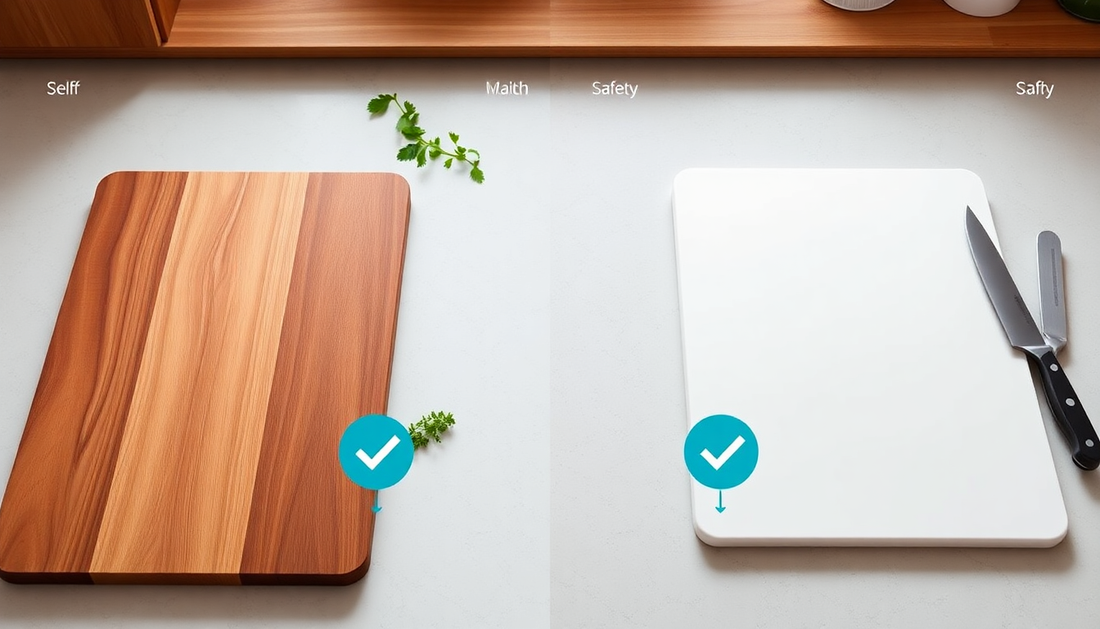
Wood vs Plastic Cutting Boards: Which is Safer and More Durable?
Share
In the world of kitchen essentials, few items are as ubiquitous as the humble cutting board. This unassuming tool plays a crucial role in our daily food preparation, yet the choice between wood and plastic can have significant implications for both safety and longevity. As the owner of Tayfus, a shop specializing in top-quality wood grill boards and custom cutting boards, I’ve had the opportunity to witness firsthand the benefits and drawbacks of these two materials.
The Debate: Wood vs. Plastic
The age-old debate between wood and plastic cutting boards has been raging for decades. While the decision may seem straightforward, a deeper dive into the science and practical considerations reveals a more nuanced landscape.
Durability and Longevity
Plastic boards are often seen as durable because they resist deep scratches. However, those same grooves can become breeding grounds for bacteria.
In contrast, wooden cutting boards have a self-healing surface — the fibers naturally close up after slicing. This makes wood not only long-lasting but also safer with proper care.
High-quality boards from Tayfus, such as our custom family cutting boards, can last for decades when treated with regular oiling and hand-washing.
Bacterial Resistance
Wood's porous nature actually helps limit bacterial growth. The wood absorbs the bacteria, which then die off inside the material.
Plastic, while non-porous, can harbor bacteria in knife cuts and scratches, which are hard to clean thoroughly.
With proper hygiene, both materials are safe — but wooden boards offer natural antimicrobial advantages.
Aesthetic Appeal
Wood wins when it comes to looks. From rustic to modern, the rich grain and tone of a wood cutting board add warmth and elegance to your kitchen. Options like the romantic swing tree board are not only functional but beautiful enough to display.
Plastic boards are usually utilitarian — often color-coded for food safety but lacking in style.
The Tayfus Advantage
At Tayfus, we handcraft cutting boards from high-quality, sustainably sourced hardwoods. Our boards are designed to be both useful and beautiful, and we offer custom engraving for a personal touch.
Whether you’re looking for a decorative piece or a sturdy workhorse, you’ll find a board that suits your needs — like our floral bouquet engraved design.
Conclusion
Both wood and plastic cutting boards have pros and cons, but when it comes to durability, safety, and design, wood is the clear winner. If you value quality and craftsmanship, a Tayfus wood cutting board is an investment you’ll appreciate every day.
💬 Frequently Asked Questions (FAQ)
1. Is a wood cutting board more hygienic than plastic?
Yes. Studies show that wood’s natural fibers absorb and trap bacteria, which die off more quickly than on plastic.
2. Can I cut raw meat on a wood cutting board?
Yes, as long as you clean and sanitize it thoroughly after each use.
3. How do I clean and care for a wood board?
Hand-wash with warm water and mild soap. Avoid dishwashers. Condition monthly with mineral oil or beeswax.
4. How long will a Tayfus cutting board last?
With proper care, Tayfus boards can last decades. The wood surface naturally resists deep cuts and warping.
5. Can I personalize my cutting board?
Absolutely. We offer a wide range of engraving options to make your board uniquely yours.
